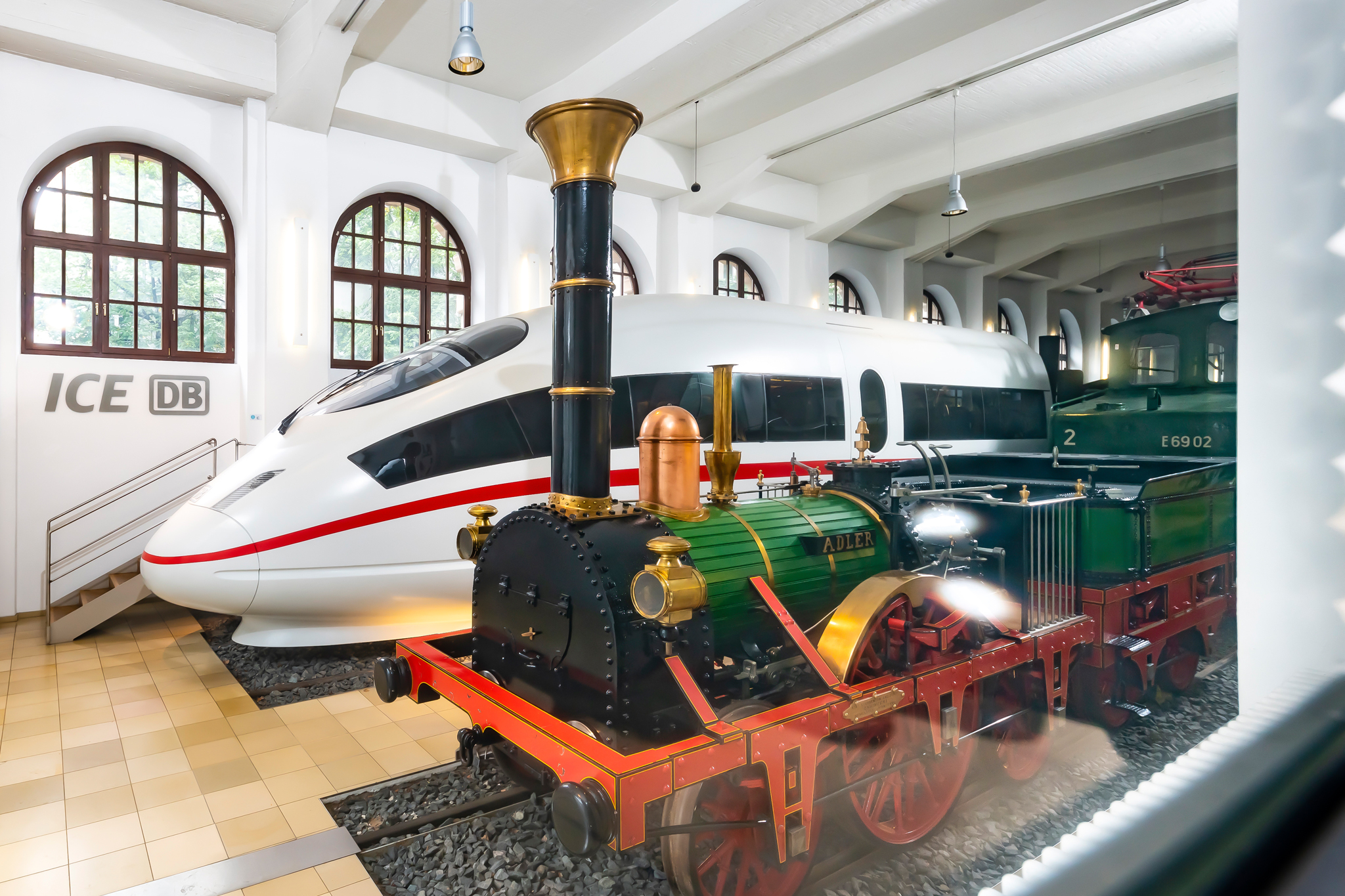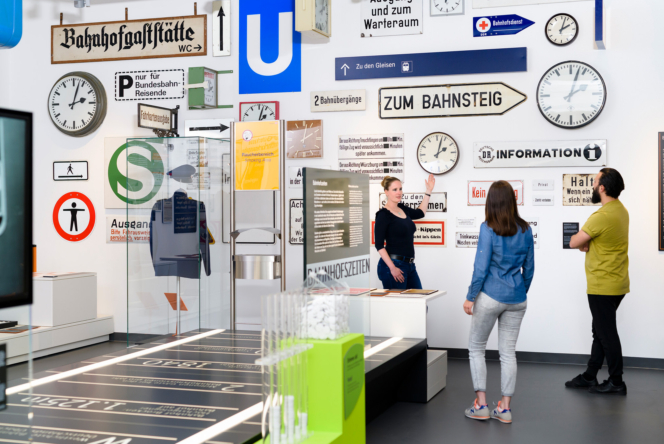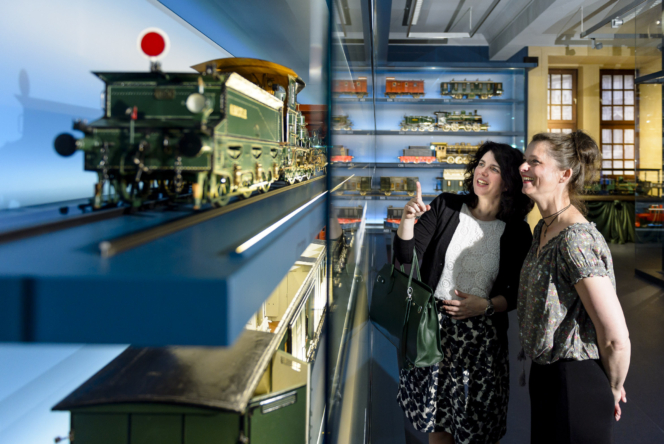Across two floors, we take you on a journey through more than 200 years of railway history and its relationship with technology, economy, society and culture.
Germany's rail history started modestly: the country's first line, which ran between Nuremberg and Fürth and opened in 1835, was just 6 km long. The "Adler" – the locomotive imported from Britain to operate the line – introduced a new means of travel to an astonished public: fast and comfortable, affordable for all and extremely profitable for the railway pioneers. It was from here that the triumphant advance of the railway began, transforming society, landscapes and cities from the ground up and catapulting Germany from an agrarian society into the industrial age. As the world entered the 20th century, this new transport system entered its golden era, an age of magnificent station buildings and powerful steam locomotives. A wealth of fascinating original objects and models vividly illustrate this development. This epoch came to an end with the First World War, whose brutal battles with hundreds of thousands of casualties were enabled not least by the new means of mass transport that the railway provided.
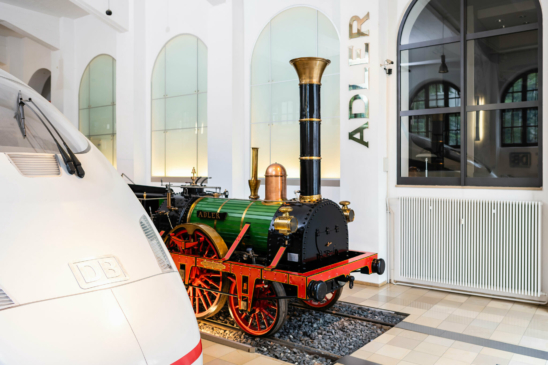


Four years of war exhausted the resilience of Germany's railways. With the creation of the Deutsche Reichsbahn (German State Railway) in 1920, which was re-established as a privately operated enterprise named Deutsche Reichsbahn-Gesellschaft in 1924, Germany's new democratic government hoped to enable the urgently needed renewal of infrastructure and rolling stock. In addition, the Reichsbahn's profits were earmarked to pay war reparations to the victorious powers. The "Golden Twenties", a brief flourishing of technological progress and economic growth, was followed by the darkest chapter in German railway history: the Reichsbahn's role in the crimes of National Socialism. Films and original objects show how rapidly the company was gripped by Nazi propaganda efforts and organisational changes. Documents and eyewitness accounts reveal how the Reichsbahn willingly enabled the Holocaust with the deportation of millions of Jews, Sinti and Roma to the extermination camps.
In 1949, the Federal Republic of Germany (West Germany) and the German Democratic Republic (East Germany) were founded, and it became inevitable that Deutsche Reichsbahn, the German national railway, would be split into two companies. In the West, the newly founded Deutsche Bundesbahn had to hold its own against growing competition from private cars; in the East, where the "Deutsche Reichsbahn" name was retained, the railway was an integral part of the socialist planned economy. This area of the exhibition features numerous interactive and audio-visual elements, such as the stories of contemporary witnesses or the device used by the Bundesbahn to test drivers' reaction speeds. Museum visitors are taken on an exciting journey of exploration through the decades from the end of the Second World War to the epochal fall of the Berlin Wall in November 1989 – a period marked by the German economic miracle, the Cold War, huge technological progress and the railway's loss of dominance.
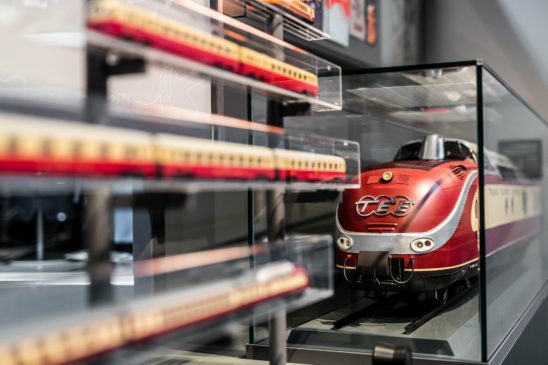
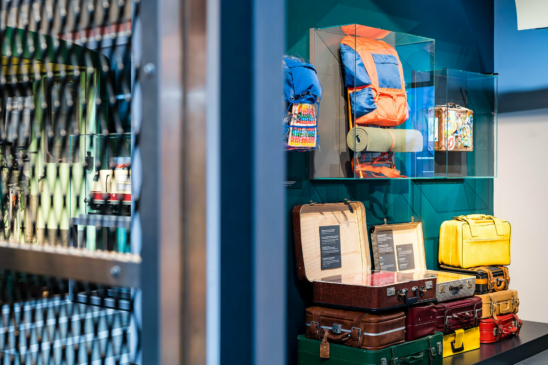
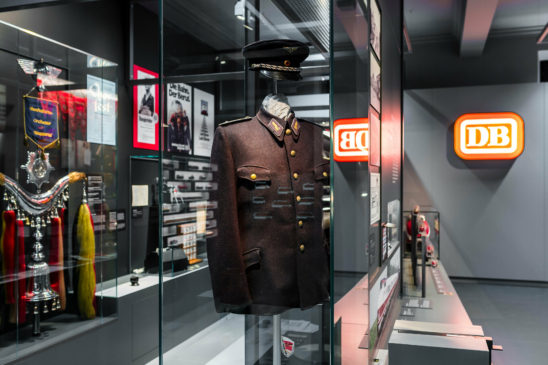


Please note: Due to construction work, this exhibition area will be closed from September 8, 2025.
